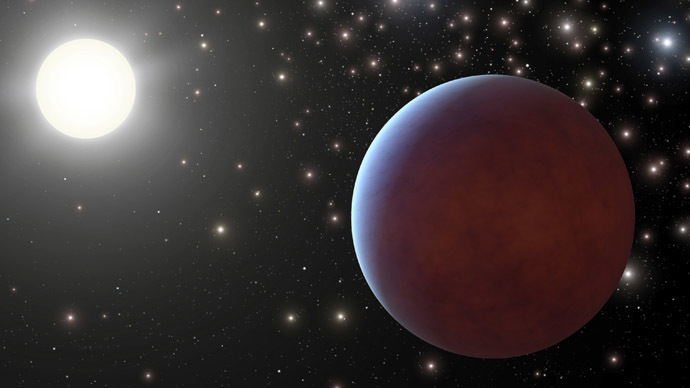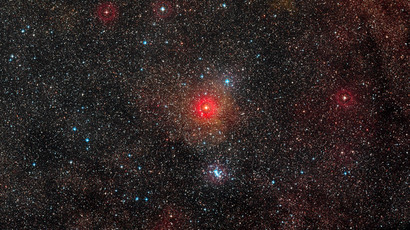Gas giant at distant sun found to have 80,000-yr orbit

An international research team has discovered a planet that takes some 80,000 earth years to orbit its star. The planet, known as GU Psc b, is about 2,000 times further from its star than the earth is from the sun.
The distance from the star is deemed to be the reason that the orbit takes so long. Even dwarf planet Pluto – which was once considered the most distant planet in our solar system – only takes 248 years to orbit the Sun
“We observed more than 90 stars and have found one planet. It is therefore an astronomical curiosity,” lead researcher Marie-Eve Naud, PhD student in the department of Physics at the University of Montreal, said in a statement released on the university website.
It orbits its parent star, GU Psc, at a distance of about 2,000 AUs (2,000 times the Earth-Sun distance, or around 300 billion km), which is a record among exoplanets. The gas giant’s parent is three times smaller than our sun, while the planet’s mass is between 9 and 13 times that of Jupiter.
It was by comparing images obtained from the various observations obtained in different wavelengths from the Gemini Observatories, the Observatoire Mont-Mégantic (OMM), the Canada-France-Hawaii Telescope (CFHT) and the W M Keck Observatory that they were able to correctly detect the planet.
“Planets are much brighter when viewed in infrared rather than visible light, because their surface temperature is lower than those of stars,” said Naud.
“GU b Psc is a veritable gift of nature. The great distance that separates it from its star renders it possible to conduct a thorough study with a variety of instruments, allowing a better understanding of giant exoplanets in general,” stated René Doyon, Marie-Eve Naud’s co-supervisor and director of the WM Keck Observatory.
The discovery in the constellation Pisces, 155 light-years away from our planet, signifies a possibility that researchers may be able to detect planets like GU Psc b in future. Its distance from its star has raised awareness of the possibility that planets can orbit at such great a distance.
The same team is to launch a project to attempt to observe hundreds of stars and detect planets with similarly wide orbits.
The research is to be published in the May-20 issue of the Astrophysical Journal.














